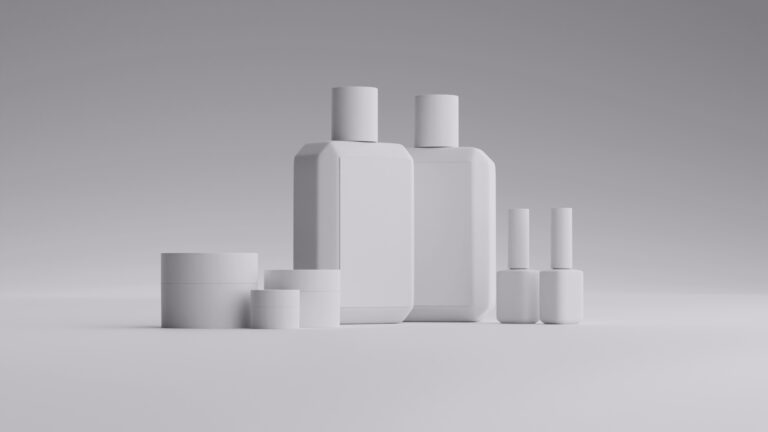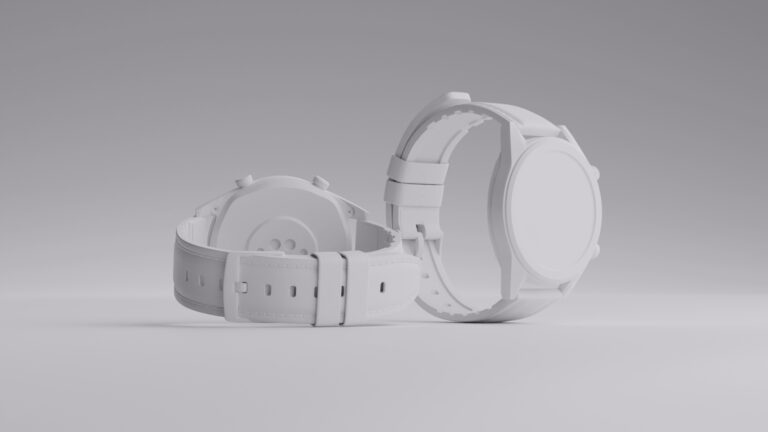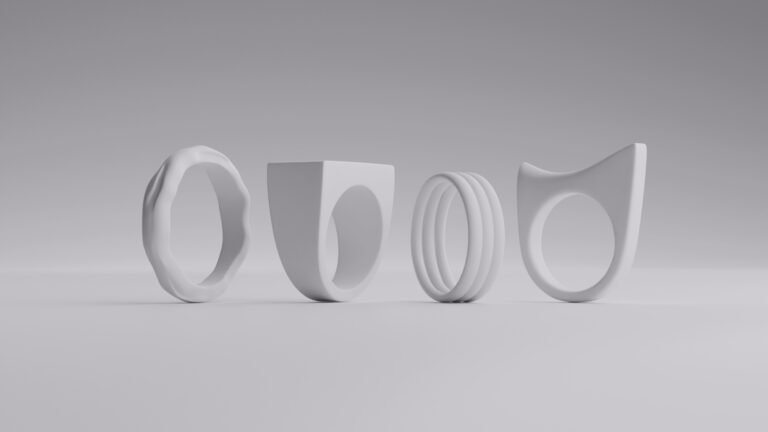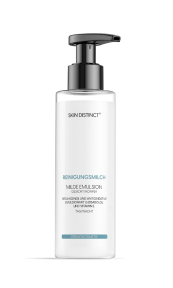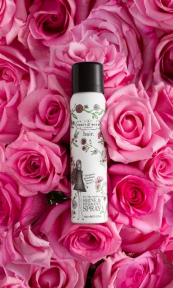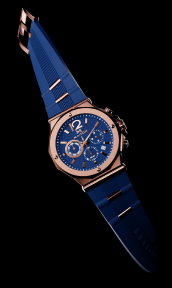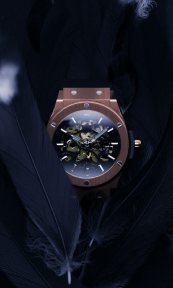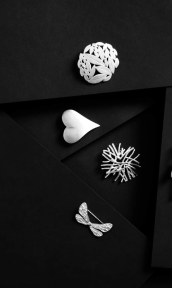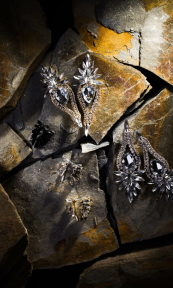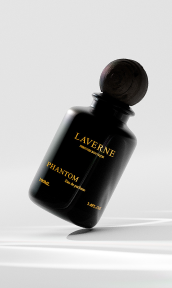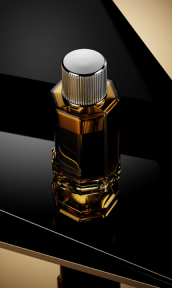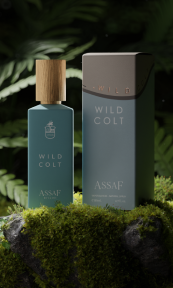Shadows play a vital role in photography, not just as natural byproducts of light but as creative tools that shape the mood, depth, and atmosphere of an image. By mastering the art of controlling shadows, photographers can elevate their compositions, whether they’re aiming for dramatic tension or soft elegance.
Two key types of shadows in product photography — hard shadows and soft shadows — each contribute distinctively to the aesthetic of a photograph. Understanding how to create and manipulate these shadows will empower you to enhance your visual storytelling.
Understanding the Difference

In photography, shadows are more than just the absence of light; they are powerful tools that shape the mood, depth, and texture of an image. Two primary types of shadows—hard shadows and soft shadows—have vastly different characteristics and contribute to the overall aesthetic in unique ways. Let’s break down the key differences in detail to understand how each can be used to enhance your photography.
What Are Hard Shadows?
Hard shadows are shadows with sharply defined edges, where the transition from light to dark is sudden and stark. They are created by a single, concentrated light source, such as direct sunlight or an unmodified flash. These shadows are crisp and create a high-contrast scene, making them ideal for creating a sense of drama or tension in the photograph.
Key Characteristics of Hard Shadows:
- Sharp, well-defined edges: The boundary between light and shadow is clear and distinct.
- High contrast: There is a noticeable difference between the illuminated areas and the shadowed areas, often making the bright parts of the image “pop” against dark, inky shadows.
- Detailed texture: Because hard shadows don’t diffuse light, they tend to accentuate fine details and textures in the subject.
- Geometric shapes: Hard shadows can create defined, angular shadow shapes that add structure and graphic elements to your image.
Aesthetic and Emotional Impact
Hard shadows often evoke strong emotions due to their intensity. They can be used to create a sense of drama, mystery, or even suspense in a photograph. In portraits, hard shadows can sculpt facial features, giving them a more defined, sometimes harsh appearance. In product photography, they emphasize the form and texture of objects, making the subject appear bold and striking.
Hard shadows are commonly found in:
- Street photography, where direct sunlight creates hard, angular shadows on buildings and people.
- Fashion photography, when photographers want a bold, edgy look.
- Low-key photography, where high contrast is used to create mood and depth with minimal light.
What Are Soft Shadows?
Soft shadows, in contrast, are shadows with blurred, gradual transitions from light to dark. These shadows are created by diffused light sources, where light is spread out and scattered over a large area. The resulting shadows have fuzzy edges, with less distinction between the illuminated parts of the subject and the shadowed areas.
Key Characteristics of Soft Shadows:
- Smooth, blurred edges: The boundary between light and shadow is soft, and the shadow’s edge is more difficult to define.
- Low contrast: The transition between light and shadow is gradual, creating a softer look with less distinction between bright and dark areas.
- Less texture detail: Soft shadows tend to smooth over textures, making subjects appear softer and more uniform.
- Natural feel: Because sunlight is often diffused through clouds, soft shadows can appear more natural and even romantic or serene.
Aesthetic and Emotional Impact
Soft shadows create a much more subdued, calming atmosphere in a photograph. They can make a subject appear more flattering, as they smooth out harsh lines and soften facial features in portraits. The low contrast in soft shadows often lends a dreamy, elegant feel to the scene, making them ideal for more intimate or emotional storytelling.
Soft shadows are typically used in:
- Portrait photography, where a flattering light is often preferred to smooth out skin tones and minimize imperfections.
- Product photography, especially for beauty or food items, where a soft, inviting presentation is desired.
- Nature photography, especially during golden hour or on overcast days, when natural light is diffused and shadows are soft.
The Core Differences: Hard vs. Soft Shadows
When comparing hard and soft shadows, there are several key differences that affect the overall feel, texture, and contrast of a photograph. Understanding these distinctions is crucial to using shadows effectively in your images.
Edge Definition
Hard shadows have sharp, crisp edges, where the line between light and dark is clearly defined. These shadows create bold, angular shapes with no gradual transition. In contrast, soft shadows have blurred and feathered edges, with a smooth transition from light to dark. The boundary between light and shadow in soft shadows is much less distinct, making the overall effect gentler.
Light Source
The type of light source plays a significant role in determining whether shadows will be hard or soft. Hard shadows are produced by small, direct light sources, such as midday sunlight or a bare flash. These focused light sources cast strong, defined shadows. Soft shadows, on the other hand, are created by large, diffused light sources, such as an overcast sky or a softbox. Diffused light spreads over a broader area, creating softer transitions in the shadows.
Contrast
Hard shadows are known for their high contrast, where there is a stark difference between the bright areas and the dark, shadowed regions. This contrast adds intensity to the image, making the shadows more pronounced and giving the scene a dramatic effect. Soft shadows, in contrast, exhibit lower contrast, with a more gradual transition between light and shadow. This creates a smoother, subtler effect in the image, reducing harsh distinctions between bright and dark areas.
Texture and Detail
Hard shadows highlight texture and fine details. Since the light transition is so abrupt, surfaces with complex textures—such as rough skin, fabric, or stone—are emphasized and brought to the viewer’s attention. Soft shadows, by comparison, smooth out textures and fine details. The diffused light softens imperfections, making surfaces appear more uniform and giving the subject a more polished or flattering look.
Mood and Emotional Impact
The emotional tone of a photograph is greatly influenced by the type of shadows present. Hard shadows tend to convey intensity, boldness, or even a sense of mystery or tension. These shadows are often used to add drama to an image, giving it an edgy or high-contrast feel. Soft shadows, conversely, create a more calming and serene atmosphere. The soft, smooth transitions evoke feelings of warmth, gentleness, and elegance, making this shadow type ideal for softer, more intimate photography styles.
Common Uses
Hard shadows are often used in specific photography styles where high contrast is desirable, such as fashion shoots, street photography, and high-contrast portraits. The clear distinction between light and shadow creates a bold, dynamic aesthetic. On the other hand, soft shadows are typically used in settings that require a more flattering or natural look, such as portrait photography, product photography (especially in beauty or food shots), and nature photography. The softness of the shadows enhances the subject’s appearance without adding harshness or intensity.
By understanding these core differences, photographers can make more informed decisions about when to use hard or soft shadows, depending on the desired effect in their images.
In summary, hard shadows contribute to a strong, edgy look, while soft shadows evoke a more gentle, flattering, and subtle atmosphere. Each type of shadow has its place in photography, and understanding when and how to use them can help you craft compelling, visually powerful images.
How to Create Soft Shadows

Creating soft shadows requires diffusing the light and spreading it out over a larger area. This softens the transition between light and shadow, resulting in gentler, more appealing shadows.
Use a Larger Light Source
The larger the light source relative to the subject, the softer the shadows. Examples include:
- Softboxes: These spread the light over a larger area, diffusing it and softening shadows.
- Umbrellas: Reflective or translucent umbrellas spread light evenly, reducing the sharpness of shadows.
- Cloudy or Overcast Sky: Natural diffusers, like clouds, scatter sunlight, softening shadows.
Increase the Distance Between the Light and the Subject
When the light is farther from the subject, the shadow edges become softer. This is because light spreads out as it travels, becoming less focused and more diffuse. When you increase the distance between the light source and the subject, the light becomes more spread out and less focused, leading to softer, more diffused shadows. This technique is particularly effective in softening harsh edges and creating a more balanced, natural look in the final image.
Diffuse the Light with Modifiers
To create soft shadows, you need to break up and scatter the light. Use light modifiers like:
- Diffusion panels: These are often placed between the light source and the subject, scattering the light and reducing shadow sharpness.
- White bedsheets or translucent fabrics: These can work as makeshift diffusers, particularly in natural light setups.
Reflectors to Fill in Shadows
Soft shadows can be made even subtler by using reflectors. Reflectors bounce light back onto the subject, reducing the depth and contrast of shadows. In portrait photography, placing a reflector beneath or to the side of the subject can eliminate harsh shadows under the chin or nose, creating a more flattering look.
In conclusion, creating soft shadows is all about diffusing and spreading the light to produce smooth, gentle transitions between light and dark areas. By using larger light sources, increasing the distance between the light and the subject, and employing modifiers like diffusers and reflectors, you can achieve flattering, subtle shadows that enhance the softness and mood of your images. Mastering these techniques will allow you to create a more natural, balanced atmosphere in your photography, making your subjects appear more inviting and polished.
How to Create Hard Shadows

Creating hard shadows in your photography involves focusing the light source and keeping it direct and intense. This results in sharp, well-defined shadows that add contrast, drama, and depth to your images. Here are the key techniques for producing hard shadows:
Use a Small, Direct Light Source
The smaller and more concentrated the light source relative to the subject, the harder the shadow. Some effective light sources for creating hard shadows include:
- Direct sunlight: Midday sunlight, when the sun is high and strong, casts sharp, crisp shadows.
- Bare flash or strobe: Without diffusers or light modifiers, a bare flash creates strong, directional light that results in hard shadows.
- Spotlights: Studio spotlights or focused lamps can also create hard shadows when pointed directly at the subject.
The smaller and more focused the light source, the more defined and sharper the shadows will be.
Position the Light Close to the Subject
When you place the light source close to the subject, the light becomes more intense and focused, creating sharper shadows. This is particularly useful when you want the shadow to mirror the shape and detail of your subject. The closer the light source, the crisper and more defined the shadow will appear, especially when there’s minimal ambient light to diffuse the effect.
Increase the Distance Between the Light and the Background
To ensure that your hard shadows are well-defined, you can increase the distance between the subject and the background or surface where the shadow falls. The further away the background is, the less the shadow spreads out and the more focused it remains, making the shadow edges sharper. This technique is especially useful for portrait or object photography where you want the shadow to be a key element of the composition.
Use an Unmodified Light Source
To create hard shadows, avoid using diffusers, softboxes, or reflectors that scatter light. Keep the light source as raw and direct as possible. For example:
- Bare flash or bare-bulb lighting: Removing softening attachments from flashes or studio lights creates a harder, more direct light beam.
- Unfiltered sunlight: Avoid shooting in overcast conditions or during golden hour, as diffused light softens shadows. Instead, use midday sunlight or direct window light to achieve hard shadows.
Control the Angle of the Light
The angle at which you position your light source in relation to the subject greatly affects the intensity of the shadows. To create hard shadows:
- Side lighting: Positioning the light at a sharp angle to the side of the subject will cast long, dramatic shadows, emphasizing texture and depth.
- Overhead lighting: Placing the light directly above your subject creates strong, downward shadows, ideal for bold, high-contrast effects in fashion or product photography.
This technique works well when you want to create a strong, directional light source that casts noticeable, defined shadows in specific areas of your image.
Shoot During Direct Sunlight
When shooting outdoors, timing your shoot during bright, direct sunlight—typically midday—produces natural hard shadows. The sun acts as a small, faraway light source, which creates defined, harsh shadows on the ground, buildings, and other surfaces. These shadows can add geometric or angular elements to your composition, especially in architectural or street photography.
By mastering these techniques, you can create hard shadows that add contrast, texture, and dramatic flair to your images. Hard shadows are a powerful tool for creating bold, eye-catching photographs that capture attention and highlight shape and form.
Choosing Between Hard and Soft Shadows

The choice between hard and soft shadows is crucial in shaping the visual and emotional impact of a photograph. Each type of shadow brings a distinct aesthetic to the scene, influencing how the subject is perceived and how the overall mood is conveyed. Deciding which type of shadow to use depends on the message you want to communicate, the nature of your subject, and the creative direction of your shoot. Let’s explore how to choose between hard and soft shadows in different photographic scenarios.
Aesthetic Considerations
The type of shadow you choose will heavily influence the visual style of your photograph.
- Hard Shadows: These are best suited for images where you want a high-contrast, bold aesthetic. Hard shadows emphasize textures and shapes, making them perfect for dramatic portraits, fashion editorials, or architectural photography where structure and definition are key elements. They work well when you want to create a sense of intensity, mystery, or graphic simplicity in your images.
- Soft Shadows: On the other hand, soft shadows lend a gentle, flattering appearance to your subject, which is ideal for creating a more subtle, romantic, or serene atmosphere. This style is particularly popular in portraiture, beauty, and nature photography, where the focus is on smoothness and emotional warmth rather than stark contrast. Soft shadows create a softer, more approachable aesthetic, which can make the subject appear more inviting or natural.
Practical Considerations
- Portrait Photography: In most portrait settings, soft shadows are preferred because they flatter facial features, soften skin textures, and reduce harsh lines. Soft lighting can hide imperfections and make the subject appear more approachable. However, if you want a more defined or dramatic portrait, using hard shadows can sculpt the face and emphasize bone structure, adding intensity and character to the subject.
- Product Photography: When photographing products, the choice between hard and soft shadows depends on the message you want to convey. For example, soft shadows are often used in beauty or food photography to create a clean, polished look, emphasizing the product’s aesthetic appeal. However, for high-end products such as watches, jewelry, or luxury items, hard shadows can add a sense of sophistication, making the object appear bold, striking, and highly detailed.
- Landscape Photography: In landscape photography, natural light plays a significant role in determining the type of shadow present. Early morning or late afternoon light tends to create soft shadows due to the sun’s lower angle, which results in a warmer, more gentle appearance. In contrast, shooting at midday when the sun is at its peak will create hard shadows, adding sharpness and contrast to the scene. The choice between hard and soft shadows in landscapes depends on whether you want to evoke tranquility or highlight the harshness and grandeur of the environment.
By carefully choosing between hard and soft shadows, you can influence the viewer’s perception and emotional response to the photograph. Each type of shadow has its place, and the decision should align with the story you want to tell through your image.
Gaining Better Control Over Shadows with CGI

In the world of photography and cinematography, achieving the perfect lighting and shadow can sometimes be challenging due to real-world constraints like natural light, equipment limitations, or time of day. This is where CGI steps in, offering precise and unparalleled control over every aspect of shadows in a digital environment. With CGI, artists and photographers can manipulate hard and soft shadows to exact specifications, allowing for creative flexibility and the ability to craft perfect lighting setups that might be impossible to achieve naturally.
Precision and Control
With CGI, you have complete control over the size, intensity, and angle of light sources, which allows for the meticulous creation of both hard and soft shadows. You can alter lighting conditions in a virtual environment without worrying about the limitations of physical setups. This includes:
- Light positioning: You can freely move the light source to any position, controlling how it interacts with the subject and environment.
- Light intensity: Unlike physical lights, CGI lighting can be modified infinitely to adjust brightness and exposure, giving you total control over shadow depth and sharpness.
- Light distance: You can easily simulate light sources that are far away or close to your subject to control the sharpness or softness of shadows, providing greater flexibility than in real-life scenarios.
Shadow Types and Customization
3D images allow extensive customization of shadow characteristics, far beyond what’s achievable with traditional photography techniques:
- Hard Shadows: In CGI, creating hard shadows is as simple as reducing the size of the light source or moving it closer to the subject. This allows for the creation of sharp, defined edges, ideal for intense, dramatic effects, with precision that’s difficult to achieve with natural light.
- Soft Shadows: To produce soft shadows in CGI, you can increase the size of the light source or adjust the light’s diffusion properties. You can also simulate atmospheric conditions like fog or haze to create even softer transitions between light and shadow.
Simulating Real-World Conditions
Computer-generated images also excels in simulating real-world conditions, allowing you to experiment with various lighting effects:
- Time of day: You can replicate different times of day, from soft, diffused shadows during golden hour to harsh, direct shadows at midday, all without waiting for natural lighting conditions.
- Weather effects: CGI can simulate how clouds, fog, or even artificial elements like reflective surfaces interact with light, giving you full creative control over shadow intensity and style.
Flexibility in Post-Production
One of the greatest advantages of using CGI for shadow control is the ability to adjust shadows in post-production. Unlike traditional photography, where shadows are baked into the image, CGI allows you to alter shadows after rendering, enabling you to tweak or completely change the shadow style without reshooting or relighting.
By leveraging CGI, photographers, filmmakers, and digital artists can achieve an unmatched level of control over both hard and soft shadows, empowering them to create highly customized lighting scenarios that suit their artistic vision perfectly.
Wrapping up
Mastering hard and soft shadows in photography is about understanding the relationship between light, your subject, and how you want to convey the mood of your image. By controlling the size, angle, and intensity of your light source, as well as utilizing tools like diffusers and reflectors, you can skillfully manipulate shadows to create powerful visual effects. Whether you’re going for the high-contrast drama of hard shadows or the soft elegance of diffused light, these techniques will allow you to shape the light and tell your story through photography.
FAQ
What is the main difference between hard and soft shadows in photography?
The primary difference lies in the transition between light and shadow. Hard shadows have sharp, well-defined edges with high contrast, while soft shadows have gradual, blurred edges with smoother transitions between light and dark areas.
How do hard shadows affect the mood of a photograph?
Hard shadows create a bold, dramatic, and intense mood. They emphasize texture, form, and contrast, making them ideal for adding tension, mystery, or a strong graphic element to the image.
What lighting setups create soft shadows?
Soft shadows are created using large, diffused light sources, such as softboxes, umbrellas, or shooting in natural light on an overcast day. The larger the light source relative to the subject, the softer the shadows will be.
When should I use hard shadows in photography?
Hard shadows are best used when you want to create a striking, high-contrast look, such as in fashion, architecture, or street photography. They work well to emphasize shape, texture, and create visual tension.
Can I switch between hard and soft shadows with the same light source?
Yes, by using modifiers like diffusers or reflectors, or adjusting the distance between the light and the subject, you can switch between hard and soft shadows with the same light source.





